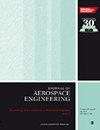利用强化学习和预测校正器技术进行具有禁飞区约束的综合入境引导
IF 1.1
4区 工程技术
Q3 ENGINEERING, AEROSPACE
Proceedings of the Institution of Mechanical Engineers Part G-Journal of Aerospace Engineering
Pub Date : 2024-03-01
DOI:10.1177/09544100241236995
引用次数: 0
摘要
本文提出了一种具有禁飞区约束的高超音速滑翔飞行器综合进入制导法。由于制导周期受限于计算效率,且无法根据规避的紧迫性调整倾角大小,因此在面对突发威胁时,采用预测-修正技术和横向制导逻辑进行制导和规避的现有方法在响应时间和机动性方面可能存在局限性。为了克服这些挑战,所提出的方法将进入过程分为安全飞行阶段和禁飞区规避阶段,并引入强化学习为后者制定智能规避策略。这种划分通过限制状态空间降低了学习问题的复杂性,并提高了在存在多个禁飞区时的适用性。经过训练的避让策略可以通过一次前向计算直接输出连续的倾角指令,同时考虑制导和避让要求。这样就能充分利用飞行器的机动性,并支持较高的指令更新频率,从而有效应对各种威胁。此外,还采用了通过监督学习训练的网络来生成参考指令,从而加快了强化学习的训练收敛速度。仿真结果证明了所提出的制导法则的有效性,突出了它的高计算效率、指令稳定性和鲁棒性。重要的是,该方法在扩展到多个禁飞区和适应广阔的初始状态空间方面提供了便利。本文章由计算机程序翻译,如有差异,请以英文原文为准。
Integrated entry guidance with no-fly zone constraint using reinforcement learning and predictor-corrector technique
This paper presents an integrated entry guidance law for hypersonic glide vehicles with no-fly zone constraint. Existing methods that employ predictor-corrector technique and lateral guidance logic for both guidance and avoidance, may have limitations in response time and maneuverability when facing sudden threats, because the guidance cycle is limited by computational efficiency and the bank angle magnitude cannot be adjusted according to the urgency of the avoidance. To overcome these challenges, the proposed method divides the entry process into safe flight stages and no-fly zone avoidance stages, and introduces reinforcement learning to develop an intelligent avoidance strategy for the latter. This division reduces the complexity of the learning problem by restricting the state space and increases the applicability in the presence of multiple no-fly zones. The trained avoidance strategy can directly output continuous bank angle command through a single forward calculation, considering both guidance and avoidance requirements. This enables the full utilization of the vehicle’s maneuverability and supports a high command update frequency to effectively handle threats. Additionally, a network trained via supervised learning is employed to generate reference commands, accelerating the training convergence of reinforcement learning. Simulation results demonstrate the effectiveness of the proposed guidance law, highlighting its high computational efficiency, command stability, and robustness. Importantly, the approach offers convenience in extending to multiple no-fly zones and accommodating vast initial state spaces.
求助全文
通过发布文献求助,成功后即可免费获取论文全文。
去求助
来源期刊

CiteScore
2.40
自引率
18.20%
发文量
212
审稿时长
5.7 months
期刊介绍:
The Journal of Aerospace Engineering is dedicated to the publication of high quality research in all branches of applied sciences and technology dealing with aircraft and spacecraft, and their support systems. "Our authorship is truly international and all efforts are made to ensure that each paper is presented in the best possible way and reaches a wide audience.
"The Editorial Board is composed of recognized experts representing the technical communities of fifteen countries. The Board Members work in close cooperation with the editors, reviewers, and authors to achieve a consistent standard of well written and presented papers."Professor Rodrigo Martinez-Val, Universidad Politécnica de Madrid, Spain
This journal is a member of the Committee on Publication Ethics (COPE).
 求助内容:
求助内容: 应助结果提醒方式:
应助结果提醒方式:


